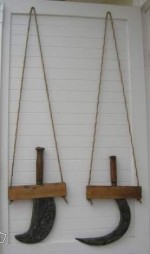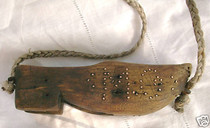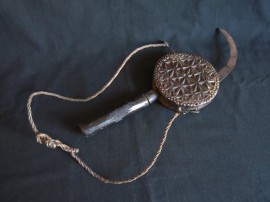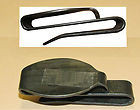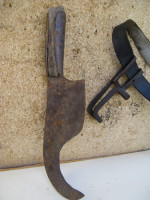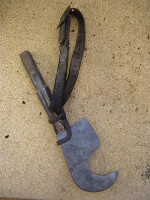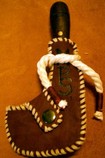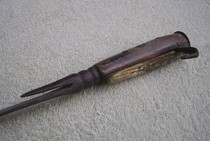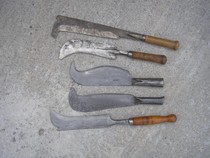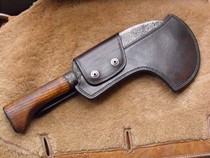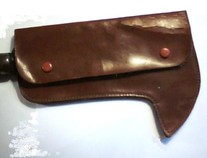Carrying a billhook
One of the most irritating aspects of using a billhook is losing it, or mislaying it. For this reason in the UK conservation volunteers often paint the blades a bright colour so that it can be easily seen when lying on the ground. In Devon and Dorset a leather strap was often attached to the blade to allow the tool to hang from the user's wrist when he wanted to use both hands.
A billhook carrier is not commonly used in the UK, although recently a number of home-made leather sheaths have been seen on various forums. The sheath was a method of carrying military billhooks. but seems to have disappeared from usage in the period following WW1.
In other countries the situation is often different, and either a carrying hook is incorporated into the blade (e.g. in France and Italy), a hook added to the ferrule (I have one example from Italy) or a wooden carrier is used (e.g. France and Nepal). A metal hook that fits onto the user's belt is common in southern Europe.
Medieval images often show the billhook tucked into the belt of the user, a somewhat precarious situation as the edge of the billhook could easily cut through the belt (military sheaths often have a brass lining to prevent the edge cutting through the stitching).
The three long 'serpes' from the Rhône-Alpes region of France have forged belt hooks. The region is just over the mountains from the Piemonte region of Italy: both were parts of the old kingdom of Savoy. The two with metal handles (the socket is not intended to take a wooden handle) are typical of those further north in the Haute Savoie region of France.
Many examples of leather sheaths can now be seen in the UK. They were used in the 19th century for military billhooks, but were not common in the 20th century. With the revival of craft skills and conservation work the 21st century has seen many users carrying their billhook in a custom made leather case.



